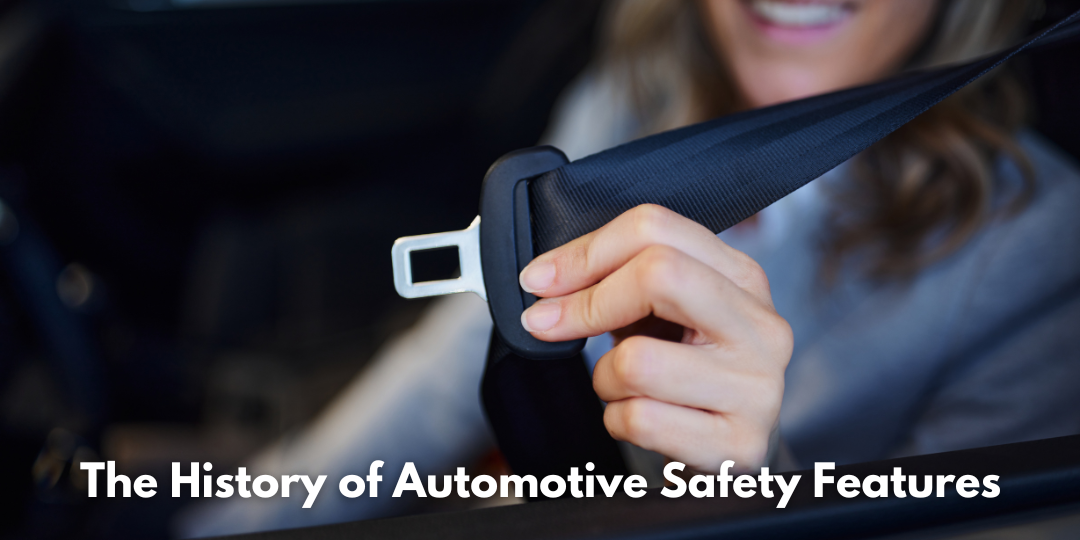The Evolution of Car Safety Features: From Seat Belts to Autonomous Systems
Car safety features are a crucial aspect of modern vehicles, designed to protect us and our loved ones on the road. These advancements have evolved significantly over time, driven by technological innovations and a deeper understanding of what keeps us safe during an accident.
In this article, we’ll journey through the fascinating evolution of car safety features—from the simple seat belt to cutting-edge autonomous systems—highlighting key milestones that have shaped vehicle safety as we know it today.
Early Safety Features
Seat Belts: The Lifesaving Straps
Imagine driving without a seat belt—it’s almost unthinkable today, but back in the 1950s, this was the reality. The introduction of seat belts was a monumental step in car safety. Thanks to Nils Bohlin, a Volvo engineer who designed the three-point seat belt in 1959, our cars became much safer.
This simple yet ingenious invention transformed passenger safety by drastically reducing the number of fatalities and serious injuries in accidents. It’s hard to overstate the impact of Bohlin’s creation, which has saved countless lives since its adoption.
Laminated Windshields: The Clear Guardians
Picture this: you’re driving along, and suddenly something strikes your windshield. Instead of shattering into dangerous shards, it stays intact. This miracle is due to laminated windshields, which started protecting drivers in the 1920s.
Made from two layers of glass with a plastic layer in between, these windshields prevent shattering and keep passengers safe from flying glass. They’ve been quietly protecting us ever since, turning what could be a hazardous situation into a minor inconvenience.
“On September 9, 1966, around 200 people gathered in the White House Rose Garden as President Lyndon B. Johnson signed the Motor Traffic and Motor Vehicle Safety Act and the Highway Safety Act. President Johnson told them that nearly three times as many Americans had died in traffic accidents in the 20th century as died “in all our wars.”
– FHWA.DOT.GOV
Advancements in the Mid-20th Century
Airbags: The Invisible Protectors
Fast forward to the 1980s, when another game-changer arrived: airbags. These invisible protectors deploy in milliseconds during a collision, providing a cushion that absorbs impact and reduces injury. Think of them as your car’s built-in guardian angels, complementing seat belts by offering extra protection.
The development of airbags marked a significant leap forward in passenger safety, making every drive a little safer.
Crumple Zones: The Shock Absorbers
Let’s not forget crumple zones, a brilliant innovation introduced by Mercedes-Benz in the 1950s. These are specific areas of a car designed to crumple in a crash, absorbing the energy of the impact.
Instead of transferring the force to the occupants, crumple zones deform and take the brunt of the collision, protecting everyone inside. This concept revolutionized car design and has been saving lives by making accidents less severe.
Related Reading: A Timeline of Vehicle Safety Features
Modern Safety Innovations
Electronic Stability Control (ESC): The Skid Stoppers
Enter the 1990s and meet Electronic Stability Control (ESC), the system that keeps your car on track. ESC works like a vigilant co-pilot, automatically applying brakes to individual wheels to prevent skidding and loss of control. This technology helps you stay in control during sharp turns or slippery conditions, making every drive safer by reducing the risk of rollovers and accidents.
Anti-lock Braking System (ABS): The Steady Brakes
ABS, or Anti-lock Braking System, is your best friend during hard braking. It prevents your wheels from locking up, allowing you to steer and avoid obstacles while braking hard.
First developed as early prototypes, ABS became a standard feature, enhancing braking performance and safety, especially on wet or icy roads. Automatic Emergency Braking is a key component in helping drivers maintain control in critical situations.
“The earliest brake system consisted only of wooden blocks and a single lever used by the driver to apply the brake. Mechanical drum brakes were developed at the beginning of the 20th century, and these were followed by expanding internal show brakes, which was the first brake system to be fixed inside the vehicle’s frame.”
– HYUNDAI.NEWS
The Role of Technology in Enhancing Safety
Advanced Driver Assistance Systems (ADAS): The Intelligent Helpers
Today’s cars are smarter than ever, thanks to Advanced Driver Assistance Systems (ADAS). These intelligent systems include features like lane departure warning systems, blind spot detection, and adaptive cruise control. They act as a co-driver, helping you stay between lane markers, avoiding unseen dangers, and adjusting speed to maintain a safe distance from the car ahead.
ADAS reduces driver error and helps prevent accidents, making every journey more secure.
Autonomous Emergency Braking (AEB): The Automatic Guardians
Autonomous Emergency Braking (AEB) takes safety a step further by using sensors to detect potential collisions. If the system senses an imminent crash, it automatically applies the brakes to avoid or mitigate the impact.
AEB is like having an extra set of eyes on the road, ready to act faster than any human, providing an extra layer of protection in critical moments.
Improved safety technologies saved over 600,000 lives between 1960 and 2012.
NHTSA.GOV
The Future of Car Safety
Autonomous Vehicles: The Self-Driving Pioneers
Looking ahead, autonomous vehicles are set to revolutionize advanced safety features. These self-driving cars use advanced sensors and artificial intelligence to navigate and offer collision warnings, potentially eliminating human error—the leading cause of accidents.
While still in development, autonomous vehicles promise a future where driving is safer and collisions are rare, heralding a new era of transportation.
Vehicle-to-Everything (V2X) Communication: The Connected Cars
Vehicle-to-Everything (V2X) communication is another exciting development on the horizon. This technology allows cars to communicate with each other and with road infrastructure. Imagine your car knowing about a traffic jam or accident ahead and adjusting your route accordingly.
V2X can improve traffic flow, reduce accidents, and make driving more efficient and safer by enabling real-time data exchange between vehicles and their surroundings.
Conclusion
From the simplicity of seat belts to the complexity of autonomous systems, car safety standards have come a long way. Each innovation has built upon the last, continuously enhancing our protection on the road.
As we look to the future, the promise of even more advanced safety technologies reminds us of the importance of ongoing innovation in making our roads safer for everyone. So, buckle up, embrace the technology, and drive safely into the future!
Ohio Drivers: Contact Zanesville Autobody for Your Auto Body Repair
This article was originally published by Zanesville Autobody Collision and Glass, LLC, a member of the Autobody of Ohio family of auto body shops.
If you are in Ohio and looking for a quality autobody shop “near me”, we are here to help you. We’ll make your car like new again!
Zanesville Autobody Collision and Glass
1152 Newark Road
Zanesville, Ohio 43701
Phone: (740) 487-3111
Fax: (740) 888-3500

